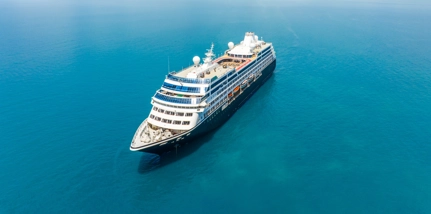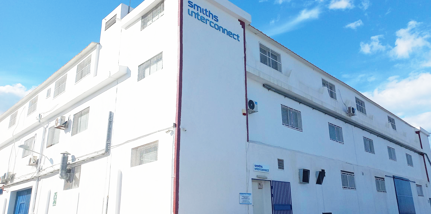17 March 2003
Airport operator BAA is starting trials at Heathrow of the latest technology to provide screening of passengers for explosives, using equipment from Smiths Detection.
Passengers in the central search area of Terminal 1 will randomly be selected to pass through the Smiths Detection Sentinel II portal. The device can detect the smallest traces of explosives on a person or clothing, providing security staff with a warning of possible terrorist links, within seconds.
"The world's busiest international airport is constantly looking to enhance its security through new technologies, so the Smiths Detection Sentinel offers a promising step forward," commented BAA director of security, Ian Hutcheson. "This could be a useful addition to our existing layers of security and should give the public further confidence in air travel . Subject to trials, I look forward to its wider introduction across our airports," he added.
The passenger checks will complement existing hand-baggage checks, using x-ray and Smiths Detection explosive trace detection equipment, in the central search areas.
Sentinel is the logical next step in airport security, said Bill Mawer, Managing Director of Watford-based Smiths Detection. It provides a proven technology to screen people, without compromising throughput. We are delighted that Europe's premier airport, London Heathrow, is the first airport installation in the world for the Smiths Detection Sentinel II."
The Sentinel II has successful completed laboratory testing by the leading aviation security agencies worldwide and is now ready for evaluation under normal operating conditions. Airports in the USA and Canada are expected to begin trials of the portal shortly.
About the Sentinel: Since its introduction in May 2002, the Ionscan Sentinel detection portal has already been installed at several high threat and high profile facilities in the United States, Canada, Greece and Mexico, including the CN Tower in Toronto, the world's tallest building.
The Sentinel can screen up to 420 people per hour for traces of explosives without coming into contact with them. Passengers are directed into the portal, where air gently passes over their body to release any particles that are naturally absorbed by or cling to a person's clothing or body. These particles are then drawn into the instrument for analysis, using the technology of ion mobility spectrometry.
Detection of these particles or vapours can indicate that a person is either carrying an explosive device or has come into contact with explosive substances.
Operation of the Sentinel is automatic, with video and audio direction provided for those entering the portal. A digital camera takes up to three pictures of the person during the analysis and can be printed as a record.
The analysis technology in Sentinel II is the same as that in the Smiths Detection Ionscan 400B trace detector, which is used to check sample swabs taken from luggage or items of personal equipment. Thousands of Ionscan 400B units are deployed at major international airports, including some 3,000 at US airports to help meet the requirement for 100% baggage screening, imposed last year.
ENDS
General media enquiries
Contact our global media and communications team at:

Please note – the press team can only answer enquiries from accredited members of the press.
Related articles

Smiths Detection secures deal to supply systems to major cruise lines
Find out more

Smiths Interconnect expands EMEA cable harness production capacity
Smiths Interconnect, announces the expansion of its cable harness production capacity at its facility in Tunisia, an investment for growth in support of all its EMEA production sites.
Find out more

Smiths Detection accelerates AI security offering with BigBear.ai collaboration
Read our company news as Smiths Detection accelerates its AI security offering with BigBear.ai
Find out more

